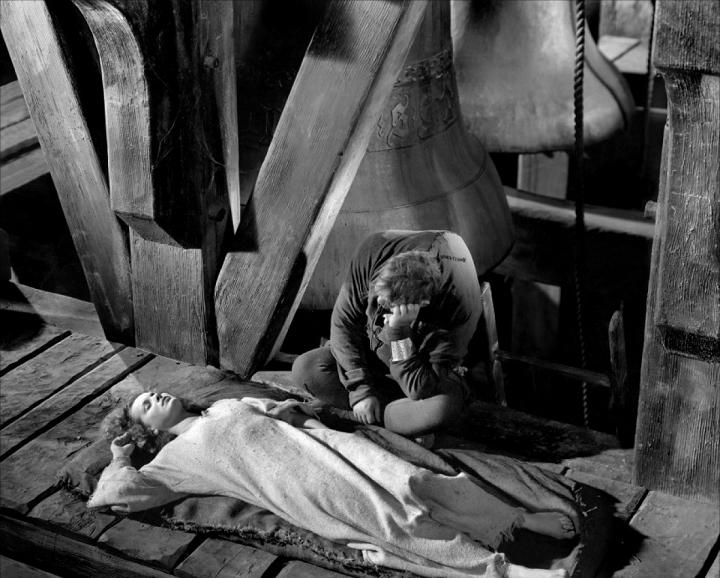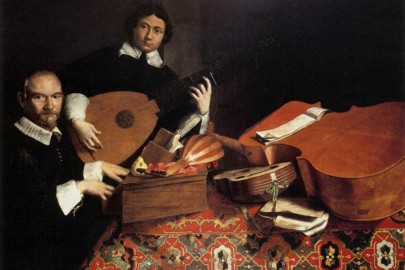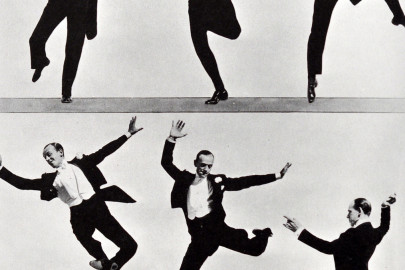This week Mahlerman’s ears are ringing…
Whilst not exactly littered with (good) examples the bell, in all its many forms, is quite common throughout the classical music canon, at least from the mid 19th Century onward. Gustav Mahler had a particular weakness born of a peculiar sentimental streak that somehow managed to stop short of wrecking some of his greatest works – the two monster symphonies, 2 and 8 both employ deep bells, the Haydnesque No 4 requests sleigh bells, tubular bells are used briefly in No 7 along with the magical cow-bells Mahler heard as a child in the fields of Bohemia, and the tragic No 6 insists on most of the above, with the addition of such quirks as a rute, a kind-of witch’s broomstick, used to strike the side of a drum, and a hammer. This last should not of course be any old hammer from Wickes. The effect Mahler was looking for at the very end of the symphony was described as ‘non metallic’ and should be ‘brief and mighty, like the fall of an axe’. The last time I heard the piece live, a huge wooden mallet with a two metre long handle was used to strike a cube of wood, the head of the mallet starting its journey behind the percussionist’s head and describing an arc above it, rather like those doctored ‘high strikers’ at fairgrounds, manipulated by the management to make strong men look stupid.
A couple of weeks ago, commenting on Rita Byrne Tull’s great piece about National Anthems, Philip Wilkinson mentioned the wonderful reworking of the Marseillaise by Hector Berlioz in 1830, and I would urge dabblers to seek it out as, in a way, it encapsulates the essence of this great romantic. For many the beginning and end of Berlioz is the unique Symphonie Fantastique, composed in just six weeks when he was 27, it remains one of the most remarkable outbursts of genius in the history of music. The opium-induced feverishness of these ‘Episodes in the Life of an Artist’ are difficult to describe, much easier to listen to. The players of the Orchestre National de France playing here in Paris in 1976, have this music in their DNA, and Bernstein seems to be enjoying this pulsating version of the Witches Sabbath last movement, the funeral bells heard just before the arrival of the idee fixe that will dominate this section, the Dies Irae, the ‘Day of Wrath’ from the Latin Mass for the Dead. Nothing like this music had been heard before, and there has been very little like it since.
Cathedral bells are evoked in the hazy beauty of Prelude No 10 of Claude Debussy’s Book One, the magical Cathedrale Engloutie or ‘Sunken Cathedral’. This impressionistic ‘picture in sound’ brings to mind the remarks made by the Italian composer Alfredo Casella when speaking about Debussy’s playing of his own music, ‘he made the impression of playing directly on the strings of the instrument with no intermediate mechanism – the effect was a miracle of poetry’. This was not the way with the great Italian virtuoso Arturo Benedetti Michelangeli, though he was able to produce poetry, and miracles. His extraordinary control of tone colour, and seemingly a complete inability to play a wrong note can give the impression of an imperious personality. Not so – but the truth was that he did not enjoy the itinerant life of a world-class pianist, and constantly yearned for privacy and even solitude. Famous for canceling almost as many concerts as he performed, his enduring obsession was with the ‘sound’ of the pianoforte, and how a minute adjustment here, or a holding-back there, can change that crystalline perfection.
On May 30th 1962 I was a spotty, hormonal 15 year old with a growing interest in music and girls. The new Coventry Cathedral had recently been consecrated and David Lepine, its first organist and choirmaster, had recently turned me down to sing in the first and second performances of Benjamin Britten’s War Requiem, quite possibly because my voice had broken and I looked like a gargoyle. I knew very little serious music, and had never heard of Britten – but my inside track at the choir got me in to the first performance, and the second. It didn’t knock me sideways (as it does now); I thought it was too long, and the six parts should be cut down to perhaps four. Oh, my shame! I have heard the piece many times since those far off days, most notably Giulini’s performance at the Albert Hall in 1969, and not once have I left a hall without noticing tears streaming down faces, while struggling to control my own emotions. Here, the late, much lamented cellist and conductor Mstislav Rostropovitch, husband of Galina Vishnevskaya, the great Russian soprano slated to sing at the premiere but thwarted by Soviet officialdom, conducts the closing pages, creating an almost unbearable tension.
The Armenian Aram Khachaturian is not a symphonist, but he did compose symphonies – three in fact. Nor is he top-drawer in the handful of ‘colourful’ concertos he composed, the D flat Piano Concerto being a particular horror, decked out in mock-oriental style and featuring, in the otherwise attractive slow movement, a section using a Flexatone (no, you look it up), which sounds like a demented Swanee whistle. But….my, could he write a catchy tune. The Second Symphony dates from 1943 and a few years later won the Stalin Prize but, knowing Joe’s tin ear for music we can put this to one side. The piece acquired its nickname ‘The Bell’ for reasons that will become obvious to you, and although it possesses all the trademark weaknesses of this composer – a chronic tendency to repeat a phrase ad nauseam, and a stubborn refusal to appreciate that enough is enough – I have to admit to a soft spot for it, as the 50 minutes of its duration are simply packed with tuneful melodies – the sort that you will find yourself humming the next day. It is also the second loudest symphony I know, the loudest being this composer’s mad third.












An education, as ever, MM, but surely looking like a gargoyle is no grounds for diaqualification from the world of serious music (exceot for female solo violinists of course)?
Genuine bell-shaped bells in the Berlioz there – very impressive. The Czech composer Martinů was born, or at any rate brought up, in a bell tower – don’t know whether he used bells prominently in his music, though.
Martinu is known for writing a huge amount of music, nearly all of which has appeared on CD at some point in the last two decades (if you looked hard enough for it). Long dismissed as being of “uneven quality”, we are now in a position to judge. The astounding variety of styles & forms could not possibly all rate highly to a single listener ~ works torn apart by some critics are rated highly by others. Something of a “Marmite” composer then, loved & loathed in equal measure… but with a Heinz-like “57 Varieties”.
Martinu uses bells in his “Miracles of Mary”, and also in the opera “Greek Passion”, but I’d have to think long & hard for other examples. That leaves well over 400 works where he doesn’t use them. However, bell-like sequences and rhythms may well be deeply woven into many of his works, for those who know about such things…
wot no mike oldfield?
Yes Skalivagur, but I feel that Martinu wrote a large amount of music because, like many Czechs (think no further than Dvorak), music came easily to him – and it shows. What he lacked was an incomplete critical sensibility, and this shortcoming allowed him too often to ‘coast’ through otherwise interesting music.
But I guess this is true of many good but not great composers – Roussel (who studied with Martinu in Paris) comes to mind, and Honegger.
More difficult for me to understand is the ongoing eclipse of say, Gustav Holst, who was low on volume, but whose music is set at a consistently high level and yet, save one work, is hardly heard at all. Perhaps it is a certain lack of human warmth amongst the poetry and mysticism?
And Worm – what can I say about old Mike? Probably much the same as I said about old Aram above – talk about hammering an idea to death…
As a connoisseur of “second-rate” & little known composers, I thoroughly recommend the “Listen three times to a piece before judging” method. Admittedly Martinu produced relatively few works which make a strong impact on first hearing… but from the third hearing onwards nearly everything comes to life. Some years ago I read a totally damning CD review of his Concerto for Two Pianos (acoustics terrible, badly played, “avoid at all costs!”), which was followed up a month later by a profuse apology & recommendation that it was superb in every department, even a “must buy”. This piece has such a weird & unique sound to it that on first listening it seems there must be something seriously wrong, but once attuned to the idiom it becomes an amazingly coloured kaleidoscopic romp! (Bell-like harmonics & syncopations here!).
Well Skalivagur, if I’ve tried to do nothing else on this blog, I have tried to treat it as a way of exploring the overgrown path, a kind-of musical remainder bin or top-shelf exploration. The two-piano concerto was the first Martinu I heard, and it formed part of a two record gift from the City of Dresden in 1960 (war rubble still in the streets) after the youth orchestra I was a member of had played there – and yes, I remember getting the vinyl home, watching the blue Supraphon labels spinning around, and wondering about the man who had lived in a bell-tower, and had created this unique soundworld.
In this piece it’s vital the pianos have some space between them to interact effectively. Sometimes they fight, sometimes they combine or there is a delicate interplay between the two. Can be riveting in a good live performance or Stereo recording, but your old Mono disc would surely have been a massive jumble of notes much of the time ~ I wouldn’t have made it to three hearings!
very much enjoying reading the comments from MM and Skalivagur almost as much as the music itself!
Thankyou Worm! I’m a Dabbling novice, having arrived here completely by accident while following a distantly related train of thought. Amazing where a computer can take you if you allow logic to mix freely with intuition.